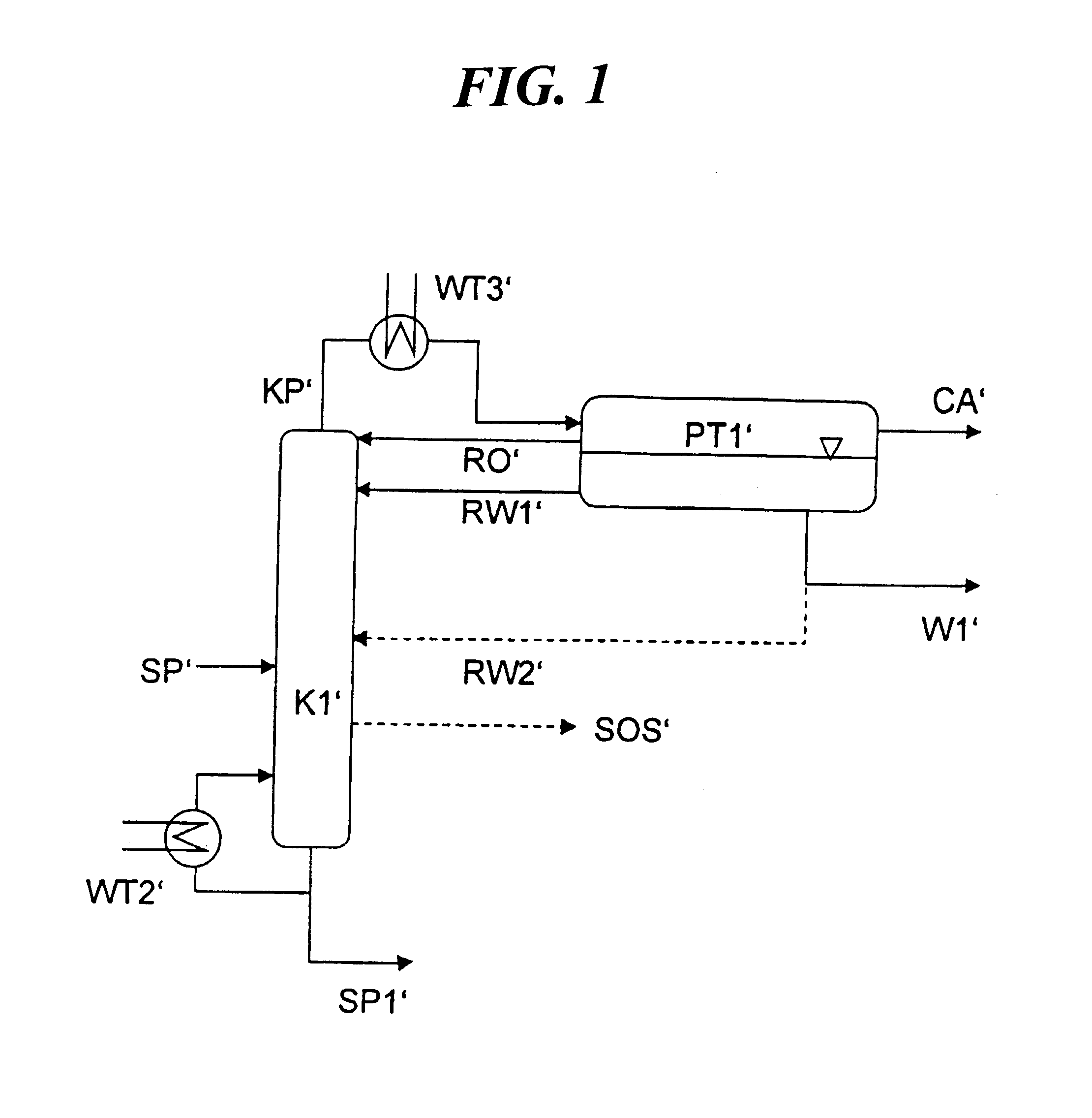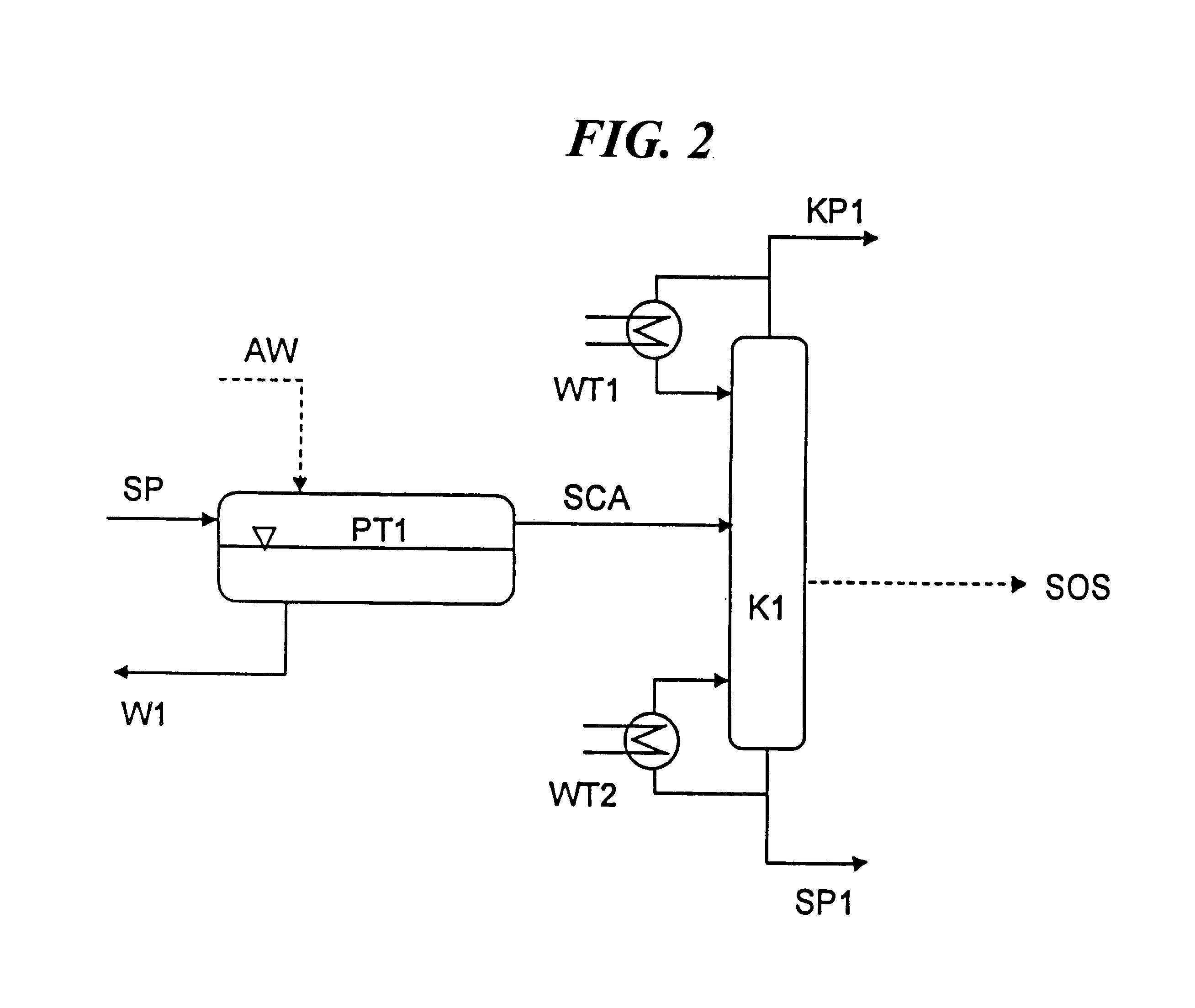Process for separating phenol from a mixture comprising at least hydroxyacetone, cumene, water and phenol
a technology of cumene and phenol, applied in the field of process for separating phenol from a mixture comprising at least hydroxyacetone, cumene, water and phenol, can solve the problems of high cost of removal of acetone and its by-products, and high cost of prior art methods
- Summary
- Abstract
- Description
- Claims
- Application Information
AI Technical Summary
Problems solved by technology
Method used
Image
Examples
Embodiment Construction
A mixture containing, 73 parts of phenol, 20 parts of cumene, 3 parts of AMS, 1 part of acetophenone, 0.2 part of hydroxyacetone and 2 parts of water, together with other materials, was fed at the side, at the height of the 40th theoretical plate, into a distillation column having 80 theoretical plates as shown in FIG. 1.
The temperature in the column was set so that the temperature at the top was 95.degree. C. and the temperature at the bottom was 182.degree. C. The pressure in the distillation column corresponded to atmospheric pressure. The fraction taken off at the top of the distillation column had a water content of 8% by weight, a cumene content of 79% by weight, a hydroxyacetone content of 0.8% by weight and an AMS content of 12% by weight. This fraction was transferred to a decanter. In this decanter, an aqueous phase comprising the major part of the hydroxyacetone present in the fraction was separated off from the fraction. Part of the aqueous phase was discarded. The remai...
PUM
| Property | Measurement | Unit |
|---|---|---|
| temperature | aaaaa | aaaaa |
| temperature | aaaaa | aaaaa |
| temperature | aaaaa | aaaaa |
Abstract
Description
Claims
Application Information
 Login to View More
Login to View More - R&D
- Intellectual Property
- Life Sciences
- Materials
- Tech Scout
- Unparalleled Data Quality
- Higher Quality Content
- 60% Fewer Hallucinations
Browse by: Latest US Patents, China's latest patents, Technical Efficacy Thesaurus, Application Domain, Technology Topic, Popular Technical Reports.
© 2025 PatSnap. All rights reserved.Legal|Privacy policy|Modern Slavery Act Transparency Statement|Sitemap|About US| Contact US: help@patsnap.com


